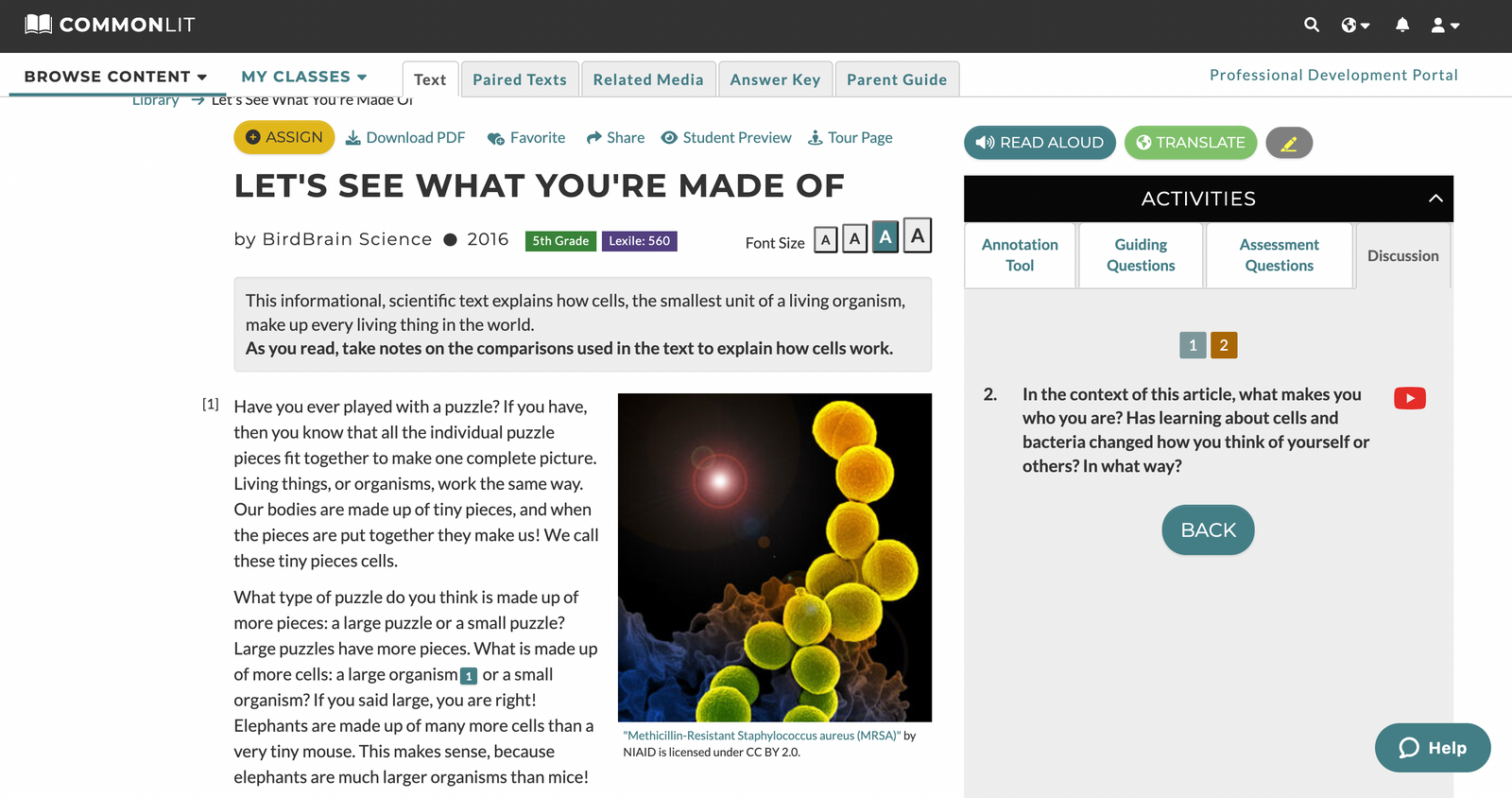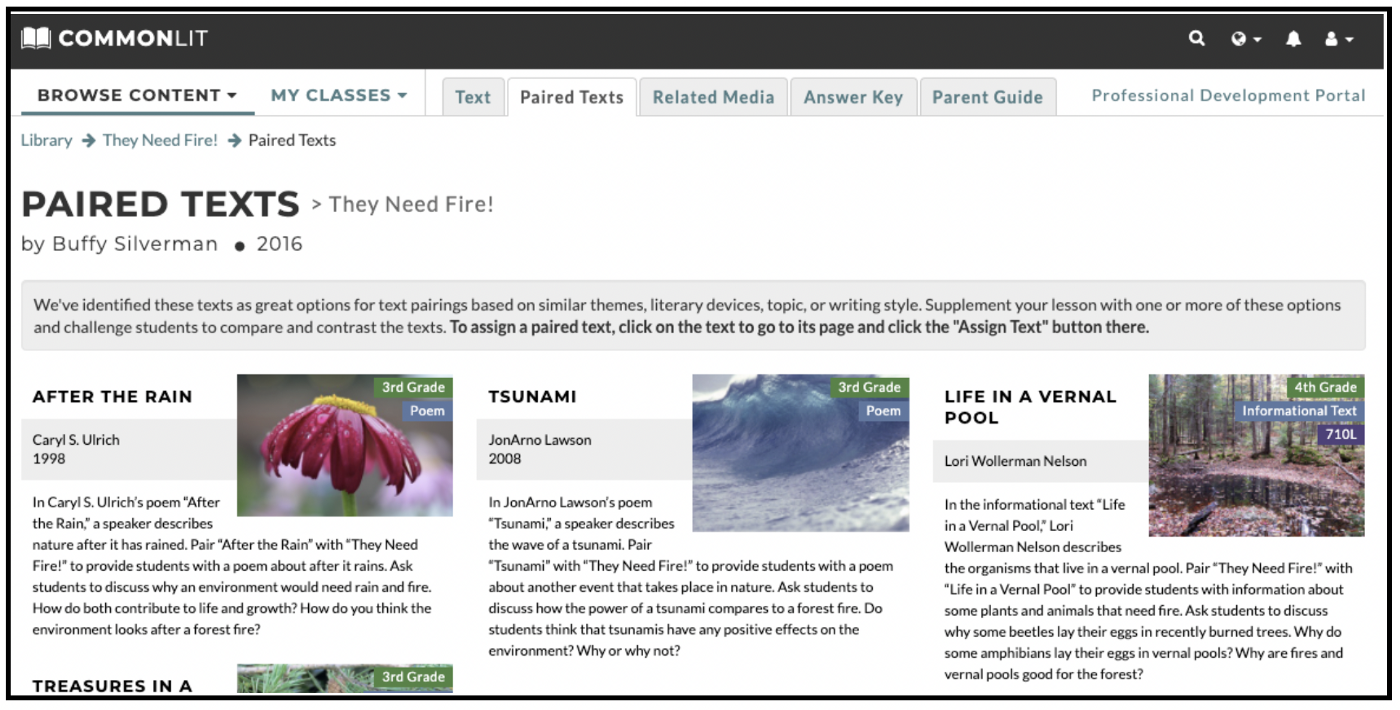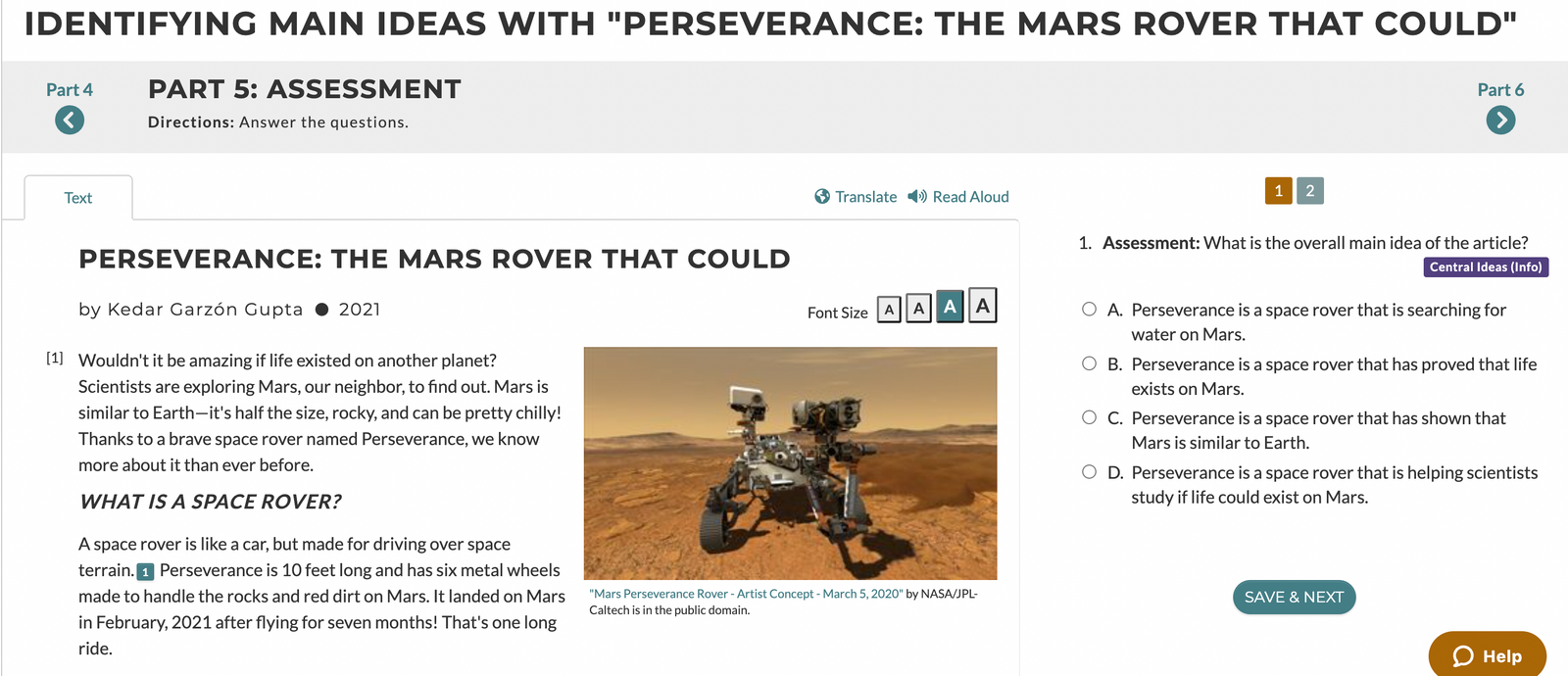 Elementary Classrooms
10 Texts That Will Line Up Perfectly with the Next-Generation Science Standards (NGSS)
Elementary Classrooms
10 Texts That Will Line Up Perfectly with the Next-Generation Science Standards (NGSS)
Elementary school teachers know the benefits of STEM education for kids. And, in 20 states and the District of Columbia, teachers must align science lessons to Next-Generation Science Standards (NGSS).
Unfortunately, in some elementary schools, courses like science can get put on the back burner in favor of longer ELA and math blocks. Luckily, you can infuse your ELA lessons with science content to ensure students are getting the well-rounded educational experience they need to grow as learners.
In fact, there are many free informational texts on CommonLit’s library that align perfectly with both ELA state standards and the NGSS – from ecosystem lessons to earth and space science lessons and beyond!
Life Science Lessons
“Life in a Vernal Pool” by Lori Wollerman Nelson (4th Grade)
NGSS Standard: LS2 – Ecosystems: interactions, energy, and dynamics
Vernal pools go through changes that are important to the life cycles of the organisms that live there. Learn about how vernal pools change throughout the seasons, and how the environment is cyclical.
Ask students to talk about why vernal pools are important and what they can do to help protect these precious ecosystems.
“Meet Your Mighty Microbes” by Nicola Davies (5th Grade)
NGSS Standard: LS1 – From molecules to organisms: structures and processes
Students will learn about how microbiomes keep us healthy. Many students will be shocked to learn that their body is a habitat – a hundred trillion tiny living organisms exist on their body!
Show students the Related Media videos about viruses and bacteria, and ask students to explain the relationship between microbes and bacteria. Flex both informational and creative writing muscles by having students write a narrative from the point of view of a microbe in their body working to keep their body healthy.
“Let’s See What You’re Made Of” by BirdBrain Science (5th Grade)
NGSS Standard: LS1 – From molecules to organisms: structures and processes
All organisms are made of cells, and large multicellular organisms have more cells than smaller organisms.
Lead a conversation based on Discussion Question 2: “In the context of this article, what makes you who you are? Has learning about cells and bacteria changed how you think of yourself or others? In what way?”

“Where Did I Come From?” by BirdBrain Science (5th Grade)
NGSS Standard: LS3 – Hereditary: inheritance and variation of traits
Assign this informational text to teach students that the genes parents pass on to their offspring are responsible for how their offspring looks and their personal preferences.
Focus on the annotation task, and have students highlight times when the author makes complex scientific processes easy to understand through the use of metaphors. Then, have students share their answer to Assessment Question 5: “How does the author use metaphors (the comparison of two unlike things without using ‘like’ or ‘as’) to support their explanation for how children take on certain traits? What is the effect of this?” This exercise will allow students to learn about the NGSS standard LS3 and practice RI.5.4 reading strategies.
Earth Science Texts
"Learning About the Solar System" by Barbara Radner (3rd Grade)
NGSS Standard: ESS1 – Earth’s place in the universe
Introduce students to the solar system through this text that teaches third graders about the Milky Way, the Earth’s orbit, and how scientists learn about the solar system.
Lead your class in answering Discussion Question 1: “In the text, the author states that there’s still a lot that scientists don’t know about our galaxy. Do you think scientists will ever know everything about our galaxy? Why or why not? What is one thing you want to know about our galaxy?”
“They Need Fire!” by Buffy Silverman (3rd Grade)
NGSS Standard: ESS3 – Earth and human activity
While students may know that fire can destroy plants and habitats, they may not know that some plants and animals need forest fires to grow and survive. This informational text will introduce students to the benefits of forest fires.
After reading, have students practice RI.3.3 by discussing if the benefits of forest fires outweigh the negative effects. Then, have students explore the Paired Texts to gain a deeper understanding of why forest fires can be beneficial.

“When Stars Explode” by Ken Croswell, Ph.D (5th Grade)
NGSS Standard: ESS1 – Earth’s place in the universe
When large stars run out of fuel and surrender to gravity, they explode in supernovas. Supernovas are violent but necessary events that help us survive by putting oxygen and iron into the universe.
Ask students to Discussion Question 1: “The text explores how supernovas produce certain elements in the universe. How does this support the idea that nature is in control? Where would humans be without the supernovae that resulted in heavier elements in the universe?”
“Destination Endangered Species” by Jacqueline Pratt-Tuke (5th Grade)
NGSS Standard: ESS3 - Earth and human activity
In this text, students will learn about endangered species and animal conservation. Pratt-Tuke outlines how Borneo orangutans, African forest elephants, and Hawksbill turtles are impacted by human activity.
Get students to think critically about the text using the annotation task, which asks students to take notes on the reasons species are becoming endangered.
Engineering, Science & Technology Texts
“Perseverance: The Mars Rover that Could” by Kedar Garzón Gupta (4th Grade)
NGSS Standard: EST2 – Links among engineering, technology, science, and society
Perseverance, a modern space rover, is helping scientists to answer the question of life on Mars. Use this as an assigned text or as a Target Lesson to help students understand how to find the main idea in a text. Ask students: How does this new technology help people understand the solar system? Why do we need to learn about the solar system? How does that help you?

“The Hubble Telescope: Photographing Worlds Beyond” by Marie Droual (5th Grade)
NGSS Standard: EST2 – Links among engineering, technology, science, and society
Scientists use the Hubble Telescope to help them understand more about space. Ask students to discuss with a partner why the Hubble Telescope is an important technological advancement. Lead students through Discussion Question 2: “How do technological advancements, like the Hubble Telescope, help us learn more about the world around us? Can you think of any other inventions that help us learn more about the world? What can they do and what can we learn from them?”
Next Steps
Looking for more texts that align to the NGSS? Check out our texts set on Animals & Their Environments!
Interested in learning all about CommonLit’s free online reading comprehension program? Join one of our upcoming webinars.

